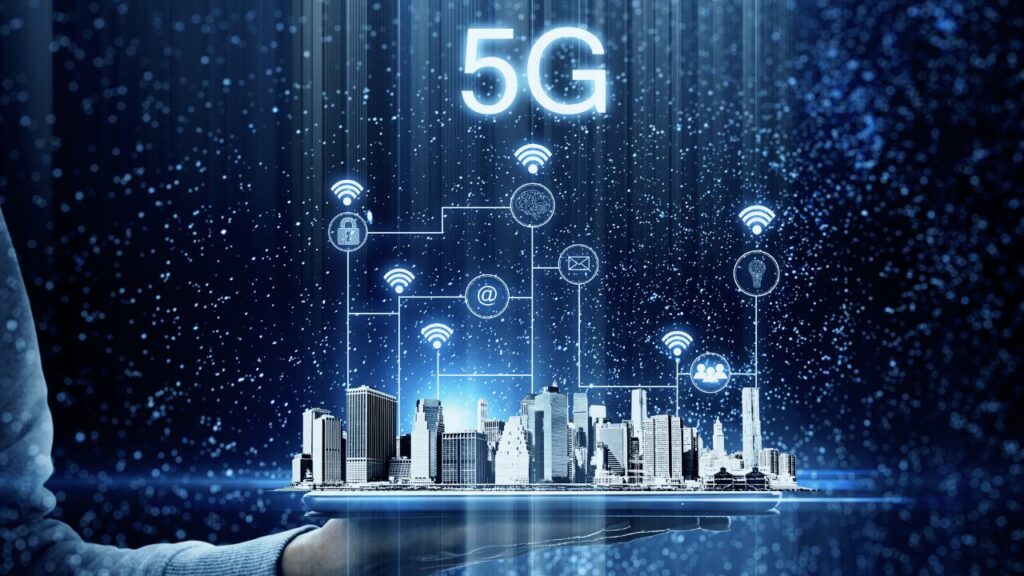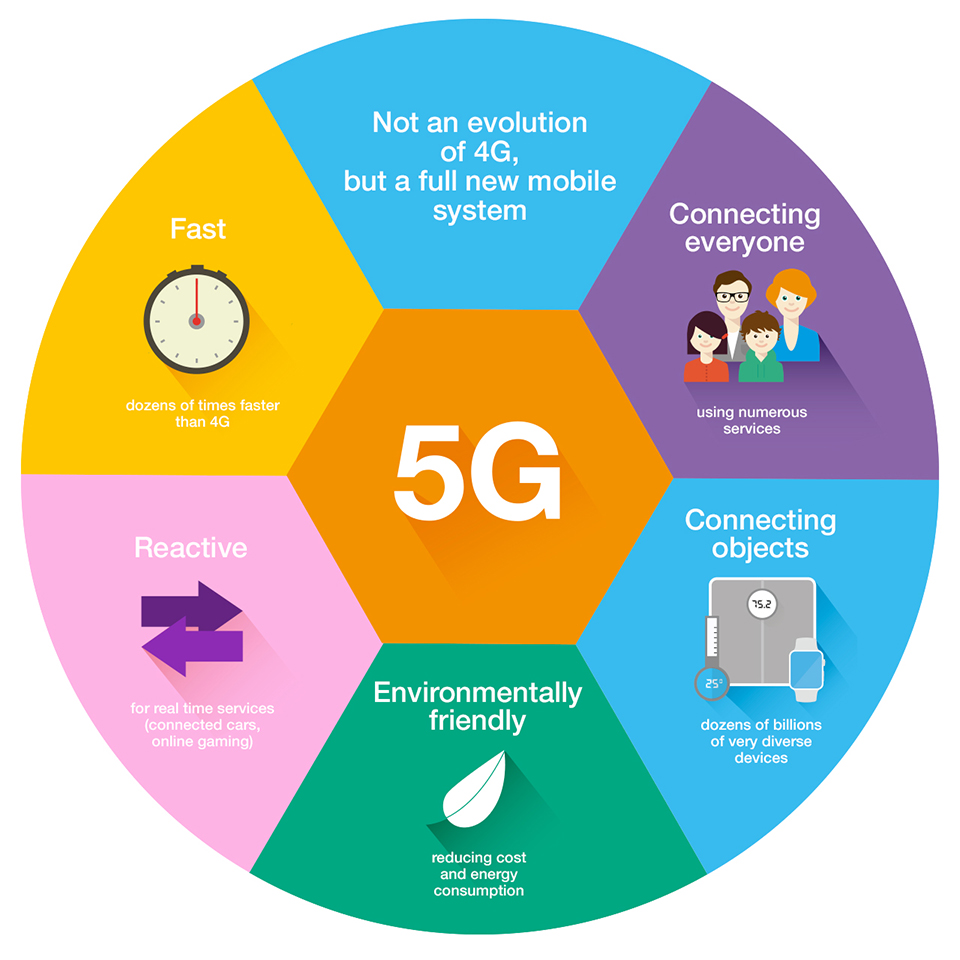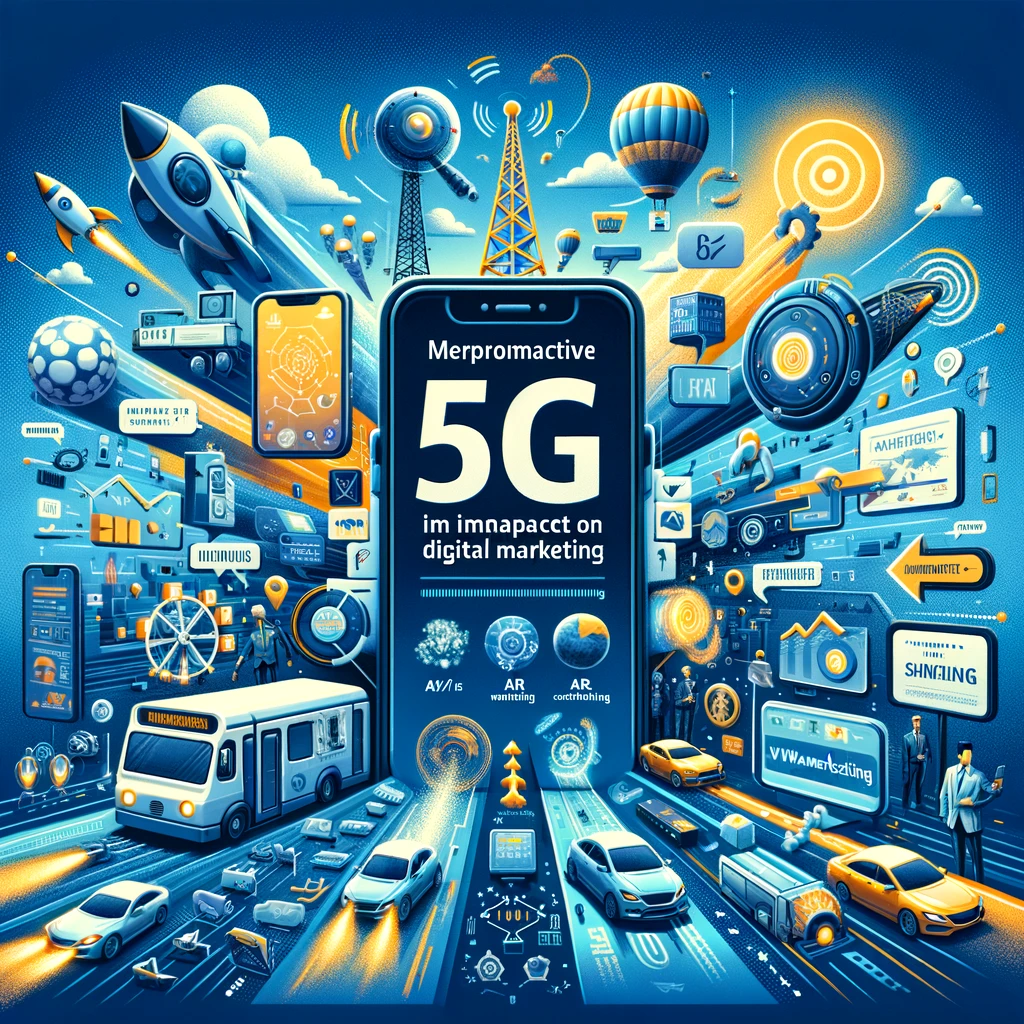Introduction
The advent of 5G technology is set to revolutionize many aspects of our lives, including how businesses approach digital marketing. With promises of faster speeds, lower latency, and greater connectivity, 5G has the potential to transform how marketers reach and engage with their audiences. This article explores the various ways 5G will impact digital marketing, offering insights into the opportunities and challenges that lie ahead.
Understanding 5G Technology
What is 5G?
5G is the fifth generation of mobile network technology, offering significant improvements over its predecessor, 4G. It promises speeds up to 100 times faster than 4G, with much lower latency, which means data can be transmitted almost instantly. Additionally, 5G can support a much higher number of connected devices simultaneously, paving the way for the Internet of Things (IoT) to become more integrated into everyday life.
Key Features of 5G
– High Speed: Up to 10 Gbps, enabling faster downloads and streaming.
– Low Latency: As low as 1 millisecond, allowing real-time communication.
– Massive Connectivity: Supports up to 1 million devices per square kilometer.
– Enhanced Reliability: More stable connections, even in densely populated areas.

Enhanced User Experiences
Faster Loading Times
With 5G, web pages, apps, and multimedia content will load almost instantaneously. This reduction in loading times enhances user experience, keeping users engaged and reducing bounce rates. Faster loading speeds are particularly beneficial for mobile users, who are often on the go and demand quick access to information.
High-Quality Video Content
5G will facilitate the seamless streaming of high-quality video content, including 4K and 8K resolution videos. This capability opens up new possibilities for video marketing, such as live streaming events, virtual reality (VR) experiences, and augmented reality (AR) applications. Marketers can create more immersive and engaging content that captivates audiences.
Revolutionizing Content Delivery
Augmented Reality (AR) and Virtual Reality (VR)
The low latency and high speed of 5G will make AR and VR experiences more accessible and immersive. Marketers can use AR to enhance product demonstrations, allowing customers to visualize products in their real-world environment. VR can offer virtual tours, immersive brand experiences, and interactive ads, providing a deeper connection with the audience.
Interactive and Rich Media Ads
5G will enable the delivery of more complex and interactive ad formats. Rich media ads, including animations, video, and interactive elements, can be seamlessly integrated into digital marketing campaigns. These ads can engage users more effectively, encouraging higher interaction rates and better conversion outcomes.

Improving Data Collection and Analysis
Real-Time Analytics
The high speed and low latency of 5G allow for real-time data collection and analysis. Marketers can gain immediate insights into campaign performance, user behavior, and engagement metrics. This real-time feedback enables more agile and responsive marketing strategies, allowing for quick adjustments and optimizations.
Enhanced Personalization
With the increased connectivity of 5G, marketers can collect more granular data about user preferences and behaviors. This data can be used to create highly personalized marketing messages and experiences. Enhanced personalization leads to better-targeted ads, higher engagement rates, and improved customer satisfaction.
Expanding the Reach of Digital Marketing
Greater Accessibility
5G will expand internet access to remote and underserved areas, bringing new audiences online. This increased accessibility allows marketers to reach a broader audience and tap into new markets. Brands can connect with consumers who were previously difficult to reach due to limited internet infrastructure.
IoT Integration
The massive connectivity of 5G will accelerate the growth of IoT devices. These connected devices generate valuable data that marketers can use to understand consumer behavior and preferences. IoT integration offers new opportunities for contextual and location-based marketing, delivering relevant messages at the right time and place.

Challenges and Considerations
Data Privacy and Security
With the increase in data collection capabilities, data privacy and security concerns will also rise. Marketers must ensure that they handle user data responsibly and comply with regulations such as GDPR and CCPA. Building trust with consumers through transparent data practices will be crucial.
Adapting to New Technologies
The adoption of 5G technology will require marketers to adapt their strategies and tools. This might involve investing in new technologies, platforms, and training to leverage the full potential of 5G. Staying ahead of technological advancements will be key to maintaining a competitive edge.
Cost Implications
Implementing 5G-based marketing strategies may involve significant costs, especially for small businesses. Marketers need to assess the cost-benefit ratio and carefully plan their budgets accordingly. Strategic investment in 5G technology can yield substantial returns, but it requires careful planning and execution.
Case Studies: Early Adopters of 5G in Digital Marketing
Case Study 1: Retail Industry
A leading retail chain utilized 5G technology to create an AR-based shopping app. Customers could use the app to visualize how furniture and decor items would look in their homes. The app provided a highly interactive and personalized shopping experience, resulting in increased customer engagement and higher sales.
Case Study 2: Automotive Industry
An automotive company launched a VR-based test drive experience using 5G. Potential customers could experience driving various car models from the comfort of their homes. This innovative approach not only attracted tech-savvy customers but also generated significant media buzz and increased brand awareness.
Case Study 3: Entertainment Industry
A major film studio used 5G to stream a live, interactive premiere of their latest movie. Fans could interact with the cast in real time and participate in exclusive VR experiences related to the film. This unique event created a buzz and drove significant social media engagement.
Future Outlook
The Evolution of Digital Marketing
The evolution of digital marketing with 5G is just beginning. As more businesses adopt 5G technology, we can expect to see even more innovative marketing strategies and tools. The continuous improvement of 5G infrastructure will enable new forms of content delivery and user interaction.
Potential for New Business Models
5G could give rise to new business models that capitalize on its capabilities. For example, subscription-based services offering exclusive AR/VR content, real-time interactive events, and personalized shopping experiences could become more prevalent. Marketers need to stay attuned to these emerging trends and be ready to adapt.
Conclusion
The impact of 5G on digital marketing is profound and far-reaching. From enhancing user experiences and revolutionizing content delivery to improving data collection and expanding marketing reach, 5G offers numerous opportunities for marketers. However, it also presents challenges that require careful consideration and strategic planning. By embracing 5G technology, marketers can unlock new possibilities and drive greater engagement, personalization, and success in their campaigns.